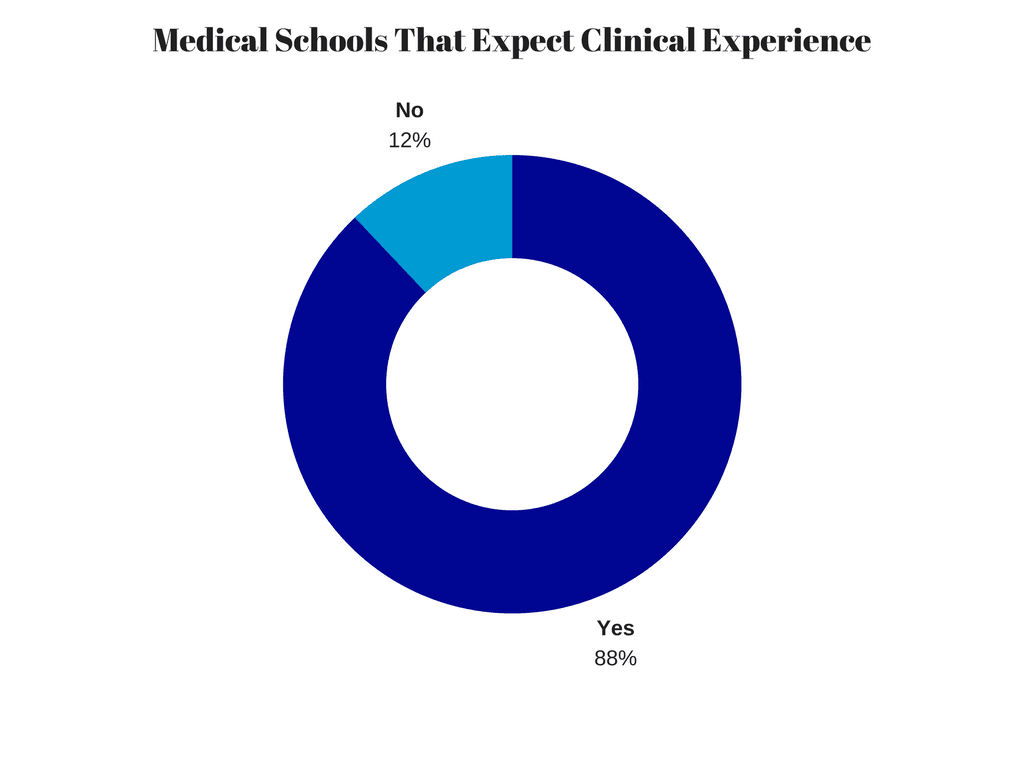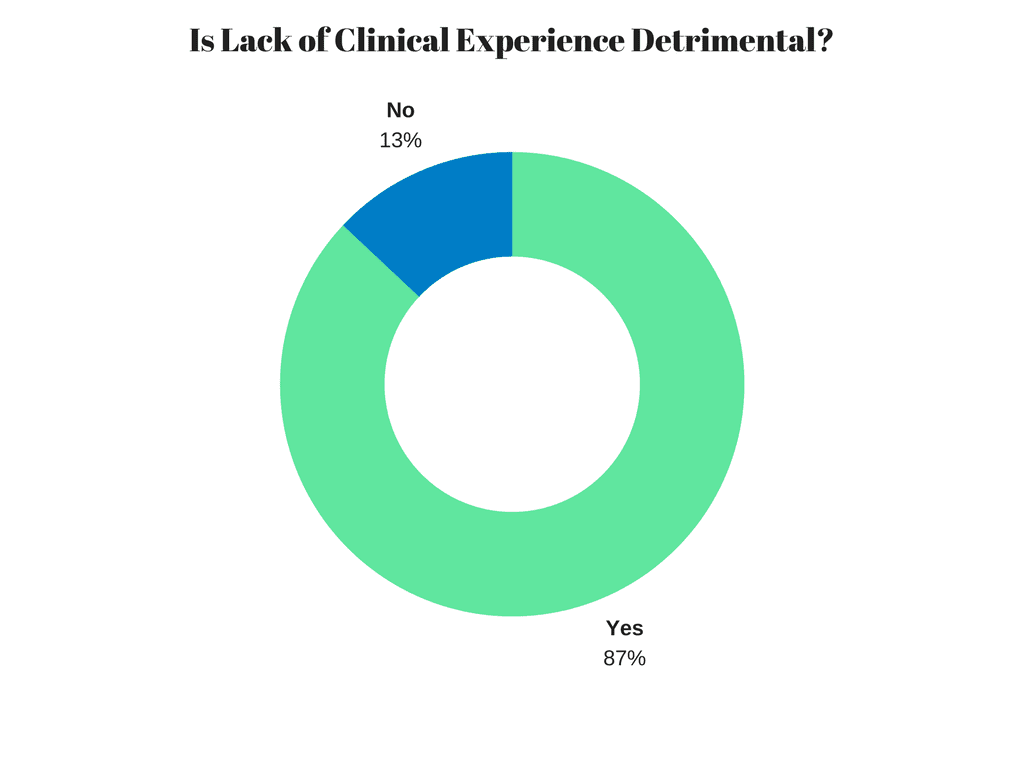Clinical Experience Tips for Busy Premeds
0 Comments

March 11, 2018 in Admissions, Medical School
The majority of medical schools expect that applicants will have clinical experience before they apply. Medical training is highly competitive. Medical schools do not want to invest time training students who will not go on to become physicians. Therefore, it is important that medical school applicants understand what a physician’s job entails. Clinical exposure allows prospective medical students the opportunity to closely observe physicians and determine if they want to pursue a career in medicine. In addition, an applicant with extensive experience in a clinical setting demonstrates that they have the dedication, compassion, and interpersonal skills necessary to succeed as a medical student.
Although not explicitly stated as such, clinical exposure is essentially a medical school requirement. According to a survey conducted by the AAMC, 73% of medical schools expected applicants to have clinical experience. Furthermore, 87% of schools reported that applicants who did not have experience in the clinical setting would be disadvantaged. Therefore, it is extremely important for medical school applicants to have clinical exposure.

The typical route for medical school applicants to obtain experience in a clinical setting is through shadowing a physician. This is a tried-and-true method for clinical exposure. Shadowing a physician will expose a future medical student to the various aspects of a physician’s job. In addition, they will have the opportunity to form a relationship with a physician who could write them a strong letter of recommendation.
Premed students can shadow physicians in an inpatient (hospital) or outpatient (office) setting. Both types of shadowing will provide a valuable clinical experience. Inpatient shadowing will expose the student to working within a healthcare team. It also will provide more opportunities to observe procedures. Inpatient work is often fast-paced and will expose a shadowing student to variety of patients. Shadowing in an outpatient location has the benefit of allowing the student a more personal experience. Because the pace of office work is typically slower, many physicians will provide personalized lectures or mentoring to the premed student. In addition, students will often have the opportunity to spend more time with the patients during their office visits.
Although shadowing a physician is the typical method for premed students to gain clinical experience, there are many other options to meet this requirement. Some clinical opportunities will require prerequisite training and may not be ideal for a traditional premedical student who is currently attending college. However, these experiences are great options for students who are taking one or more gap years. Many of these opportunities provide the additional benefit of compensation.

Emergency medical technicians are exposed to a variety of patients and pathology. They develop the skills necessary to think quickly and calmly in an emergency situation. In addition, EMTs work closely with physicians and other members of the healthcare team. Working as an EMT can provide a premedical student with experience collaborating with other healthcare professionals. In addition, they will gain an understanding of the healthcare needs of their community.
Each state has its own requirements for EMT training. Generally, EMT training programs are offered at community colleges. Some programs require as little as 6 months to complete. EMT-trainees must then pass a state or national exam to become licensed.
Medical assistants provide clinical support and administrative services to healthcare professionals. They often work in outpatient settings checking vitals, rooming patients, and performing minor procedures. Medical assistant training can be obtained through community colleges or technical schools. These programs typically take 9-12 months to complete.
As many healthcare systems have transitioned to electronic medical records, the need for medical scribes has greatly increased. Scribes work alongside physicians and provide documentation of the visit in the patient’s chart. Because medical scribes work closely with physicians, they have the opportunity to get an intimate view of what it is like to be a physician. In addition, they gain skills in medical documentation. Generally, no formal training is required to become a medical scribe. Many hospitals will provide the training necessary for the position.
Phlebotomists work as members of the healthcare team. Their job is to collect blood from patients and prepare the samples for medical testing. Phlobotomists get direct patient experience and have the opportunity observe physicians at work. Phlebotomy training programs can be completed in as little as one semester.
There are several companies that offer premedical students experience in a clinical setting in foreign countries. Many of these program advertise that they offer students a hands-on experience. They claim to train premedical students to perform procedures and allow them to assist in the treatment of patients once they achieve competency. This may seem like an exciting option to gain clinical exposure. However, premedical students should avoid this type of clinical experience. These programs take advantage of premedical students (by charging them exorbitant fees for the experience), and they victimize the patients (by allowing poorly trained people to perform medical procedures on them). Furthermore, AMCAS reports that 50% of medical schools deemed this sort of clinical experience to be detrimental a prospective student’s application.
The primary goal of a clinical position for a premedical student is to observe the activities of a practicing physician. In addition, they should develop a basic understanding of the healthcare system. A student should have the opportunity to observe a variety of patient encounters during their clinical time. The goal of the experience is not to gain clinical skills; but to simply expose the student to a clinical environment.
Medical schools value the quality of the clinical experience over the quantity of time spent doing it. However, the activity should be longitudinal in nature. Medical schools will not consider it significant for a student to visit a physician’s office for a few hours on a single day. Instead, a student should plan to visit their clinical site on multiple occasions for a minimum of one month.
Clinical experience is vital for a serious medical school applicant. There are a variety of options to gain clinical exposure. Premedical students should contact their local hospital to find out about clinical opportunities in their area.